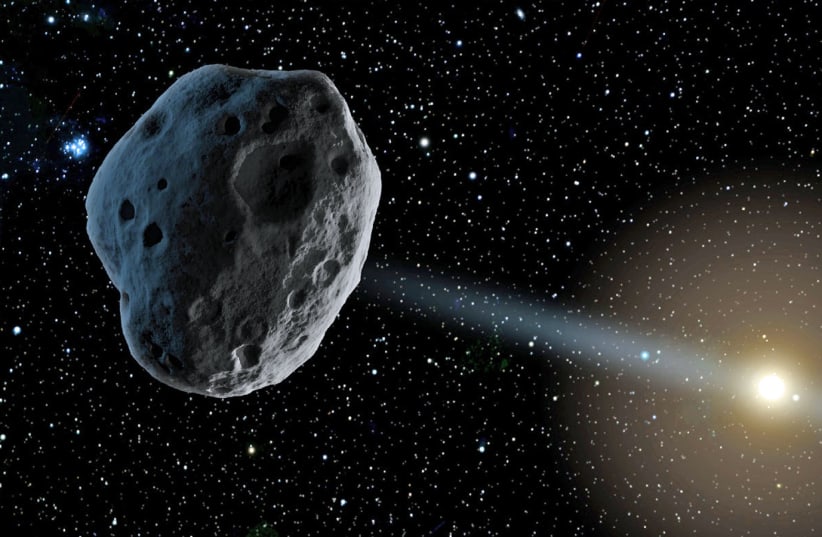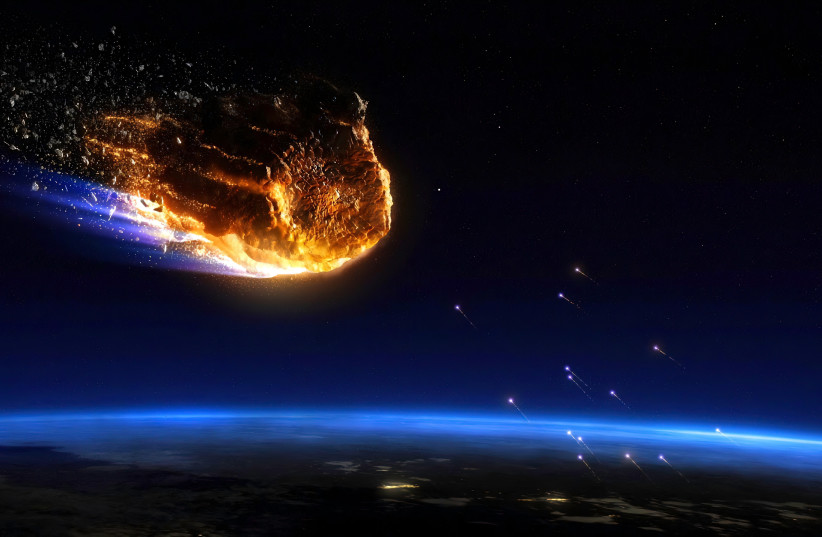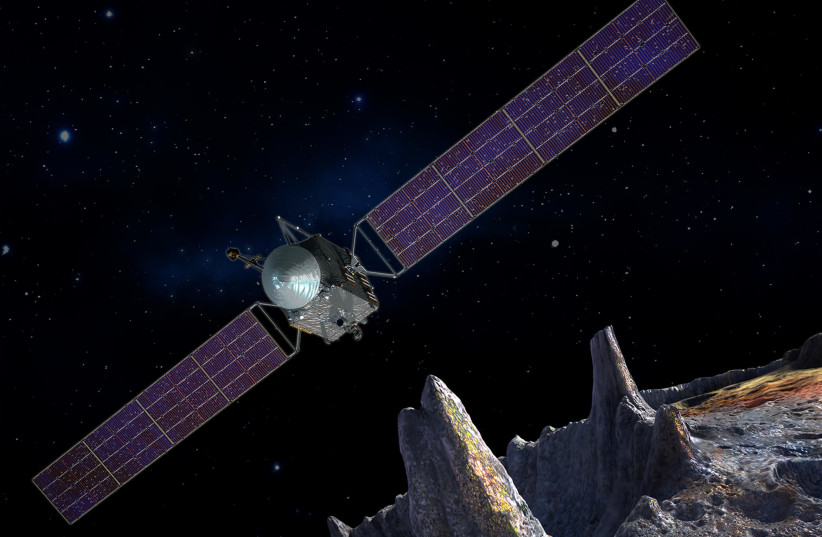Asteroids make up one of the most numerous types of objects in the solar system. Currently, 1,113,527 asteroids are known to exist in the solar system, according to NASA, but those are just the ones definitively identified, with experts always finding more.
These large space rocks vary in size, some less than a meter wide, others stretching several kilometers.
Some of these just orbit around the sun, never approaching anything else. Others skirt dangerously close to planets, including several close brushes with our own planet – and on a few occasions, actually hitting us, causing an impact event.
These impacts are incredibly destructive and have the potential to be the cause of major catastrophes, destroying cities, continents or even a global disaster.
Mining on Armageddon
The destructive nature of asteroids, even small ones, is something well known to experts, with space agencies around the world monitoring for potential catastrophic impacts, as well as researching potential means of identifying them and stopping them. It is something that has also long permeated the realm of popular culture, whether it be from now classic films like Armageddon or the very recent Don’t Look Up.
BUT ASTEROIDS are not necessarily just the harbingers of destruction we have long considered them. Rather, they may just be able to help save the Earth.
Asteroids are, essentially, rocky remnants of the formation of the solar system. Sometimes called minor planets, these rocks are made of various materials and minerals from those early days.
Billions of years ago, many of these asteroids are thought to have collided together to eventually form planets, and the minerals and materials support this.
In short, these asteroids contain a wide host of minerals and materials, many of which can also be found on Earth. And that means they can be mined.
This itself is unsurprising. In fact, humanity has known about this for thousands of years.
Over 5,000 years ago, ancient civilizations during the Bronze Age were already making use of meteors (themselves fragments of asteroids or really small asteroids) as a source for iron and nickel. This, in turn, would eventually lead to the beginning of the Iron Age, as iron became more widespread.
But nowadays, we can get iron and nickel from the Earth. So why would we waste our time trying to go to space, in what will likely be long, complicated and expensive voyages, for something that could be mined locally?
There are several reasons for this. Mining on Earth, especially in modern times, is incredibly destructive to the planet. Iron mining, for example, emits several types of harmful gases into the atmosphere and releases acidic compounds such as sulfuric acid into the environment. Iron mining also often causes the natural terrain to be altered, which can destroy natural habitats for many animals and can cause severe damage to the ecosystem.
As iron mining happens all over the world, these consequences are global, and add to the overall worsening climate disaster.
Mining asteroids, however, would avoid these consequences from happening, as the Earth itself won’t be exploited for these resources.
What kinds of minerals could we mine on asteroids?
According to the Weizmann Institute of Science’s Dr. David Polishook, who is also a member of NASA’s Double Asteroid Redirection Test (DART) Mission which seeks to test asteroid deflection in order to avert an impact, there are three categories we need to care about.
First, he told the Magazine, there are strong metals, such as iron and nickel. These are relatively common on Earth and can be used in a variety of applications. Second, there are the rarer metals such as platinum and iridium. These minerals are very rare and extremely expensive. As such, there is definitely a profit to be made by bringing these to Earth. The third isn’t a mineral exactly but is still something extremely important: water.
“Yes, the same H2O we all drink,” Polishook clarified.
This itself isn’t unsurprising. Scientists have long known water and ice to be present on various asteroids throughout the solar system. In fact, it is commonly theorized that asteroid impacts are what ended up bringing water to Earth in the first place.
The scientific community is well aware of the potential value of this field, as while the collective mass of asteroids may not seem like much compared to a planet – indeed, according to NASA, the combined mass of all asteroids in the asteroid belt between Mars and Jupiter is actually less than the Earth’s Moon – they are still filled with valuable materials in extremely high quantities.
Indeed, there is even a large resurgence in asteroid exploration in recent years. Several recent missions have already been launched to bring back samples of asteroids. These include the Hayabusa and Hayabusa2 missions from the Japan Aerospace Exploration Agency (JAXA) and NASA’s ongoing Origins, Spectral Interpretation, Resource Identification, Security-Regolith Explorer (OSIRIS-REx) mission. Hayabusa managed to bring back a sample from 25143 Itokawa, Hayabusa2 brought back a sample from 162173 Ryugu and OSIRIS-REx is currently bringing back a sample from 101955 Bennu.
Interest hasn’t waned either. In October, NASA launched its latest probe, known as Lucy, to study Trojan asteroids near Jupiter in a first-of-its-kind mission. Later, NASA plans to send a probe to 16 Psyche, a massive asteroid 227 kilometers in diameter – longer than the maximum length of Cyprus – rich in iron and nickel that was once believed to be worth around $10 quintillion, which is more valuable than the entire global economy, though this exact value is still up for debate.
Even the United Arab Emirates, coming off the success of its recent Mars mission, is planning to land a spacecraft on an asteroid.
Ostensibly, these missions are less about mining and more about scientific curiosity, as asteroids hold keys to understanding the formation of the solar system and, by extension, our very planet. However, that is not to say asteroid mining has not generated interest elsewhere. In fact, there are already laws on the books about it. Asteroid mining is specifically mentioned in the United Nations-mediated Outer Space Treaty, signed by over 100 countries worldwide, and some countries like Luxembourg have already legislated local laws about it.
Economic benefits of Asteroid mining
“Mining materials rare on Earth could make the miner rich,” Polishook explained, comparing it to the boom of the 19th-century California gold rush.
Yes, launching mining missions to asteroids is expensive, but the returns could be worth it. Especially since asteroids have materials there that astronauts could use. This includes water, which can be used for drinking, creating oxygen for astronauts to breathe, or creating hydrogen for spacecraft to use as fuel. It could also be possible to mine a certain type of helium isotope known as helium 3. A thin layer of this light material that originates from the Sun can be found on the surface of any atmosphere-less body, including asteroids, and it could be possible to turn this into energy through nuclear fission.
In other words, economically, the cost of these missions could be negligible.
There is also great interest in identifying asteroids that would be prime targets for these missions, with many prioritizing large and close-by asteroids. One website, the asteroid value database Asterank, has even begun estimating the value of various asteroids as well as the estimated profit of these missions. Right now, according to Asterank, a number of asteroids are valued over $100 trillion, but in terms of cost-effectiveness, the most profitable is Ryugu, with an estimated value of $82.76 billion and an estimated profit of $30.08b.
Another ideal target, though much more difficult, is Ceres, the largest asteroid in the asteroid belt, with a diameter of around 980 kilometers – in fact, it is so large that, according to some scientists, it should actually be considered a planet in its own right – which is rich in ice water. This could serve as an ideal hub of sorts for these mining missions.
HOWEVER, THERE are obstacles in the way of asteroid mining succeeding.
Major obstacles to Asteroid mining
According to Polishook, there are three major obstacles in the way.
“First, identifying the composition of an asteroid using a telescope and determining if it is rich with water, iron or platinum is still not straightforward. This is especially true for platinum, which was only recognized in meteorites that reached the Earth. It is only reasonable you can find these in asteroids, since meteors come from asteroids, but platinum was never seen in them before.
“A close look at an asteroid using a spacecraft can identify these materials, but one can’t send thousands of probes to thousands of asteroids to look for platinum while keeping their budget balanced,” he explained.
“Second, reaching the relevant asteroid is also a challenge, though it has been done before. To do this commercially, you will have to invest much more in R&D for your vehicles and equipment.
“Third, digging in an asteroid or dismantling it or vaporizing it and carefully collecting the ore you need, whether platinum or even water, is not an easy task when you need to work in zero-gravity,” he added. “While it is a lot of material to sift, these bodies are not large enough to have a strong gravity of their own. Thus, you cannot land on them or stand on them and mine. The miners, whether humans or robots, will have to hook themselves in some way to the surface in order to work while the asteroid rotates at a few hours per circle.”
And it isn’t as though NASA hasn’t tried to do this before.
“Some years ago, NASA developed a tool to capture an asteroid, but with these many hard-to-solve technological issues, this tool became relevant to only lift a 2-meter-wide rock from an asteroid surface, and eventually this program was canceled. So, objectively, this issue is hard to solve,” Polishook said.
Even the promise of helium 3 isn’t enough, because while it is theoretically possible to turn it into energy through nuclear fission, scientists currently have no way or even an idea of how to actually do this, putting it firmly in the realm of science fiction at the moment.
Despite their further planned asteroid missions, Polishook doesn’t think NASA or other national space agencies will get into mining operations in the near future – they have enough on their plate as it is, he said.
Most likely, asteroid mining would fall into the realm of the private sector. However, people have already tried and have paid the price.
The most notable example of these ventures was Planetary Resources, a company first founded in 2009 as Arkyd Astronautics that sought to launch asteroid mining operations. The company had buzz around it and some big-name investors and advisers that sought to have mined an asteroid in 2020. The company even managed to launch two satellites, one in 2015 and one in 2018. However, numerous financial issues caused the entire venture to fall through.
Another venture, Deep Space Industries, was launched in 2013, but this, too, ended up failing.
Further, while asteroid mining would undoubtedly be beneficial to the planet, as it could avert the dangers of mining operations, it wouldn’t affect the most damaging kind of mining: fossil fuels. This is because these materials, like coal, natural gas or oil, are formed from the remains of dead organic matter – something that is all but impossible to exist on asteroids, which are almost certainly devoid of life.
“As long as we are not in severe need of platinum, and we have enough water in Earth’s oceans, the private sector will fail,” Polishook explained.
But things could be changing now.
The commercialization of space has exploded in recent years, especially with the private sector’s launch of space tourism ventures. Billionaire entrepreneurs such as Sir Richard Branson, Jeff Bezos and Elon Musk have all thrown themselves into the new privatized space race, as mankind once again reaches for the stars with renewed zeal and vigor.
Right now, they may seem content with tourism and communication satellites, but it could be possible that this new renewed interest in space commercialization could be the drive needed to make asteroid mining a possibility once more.



